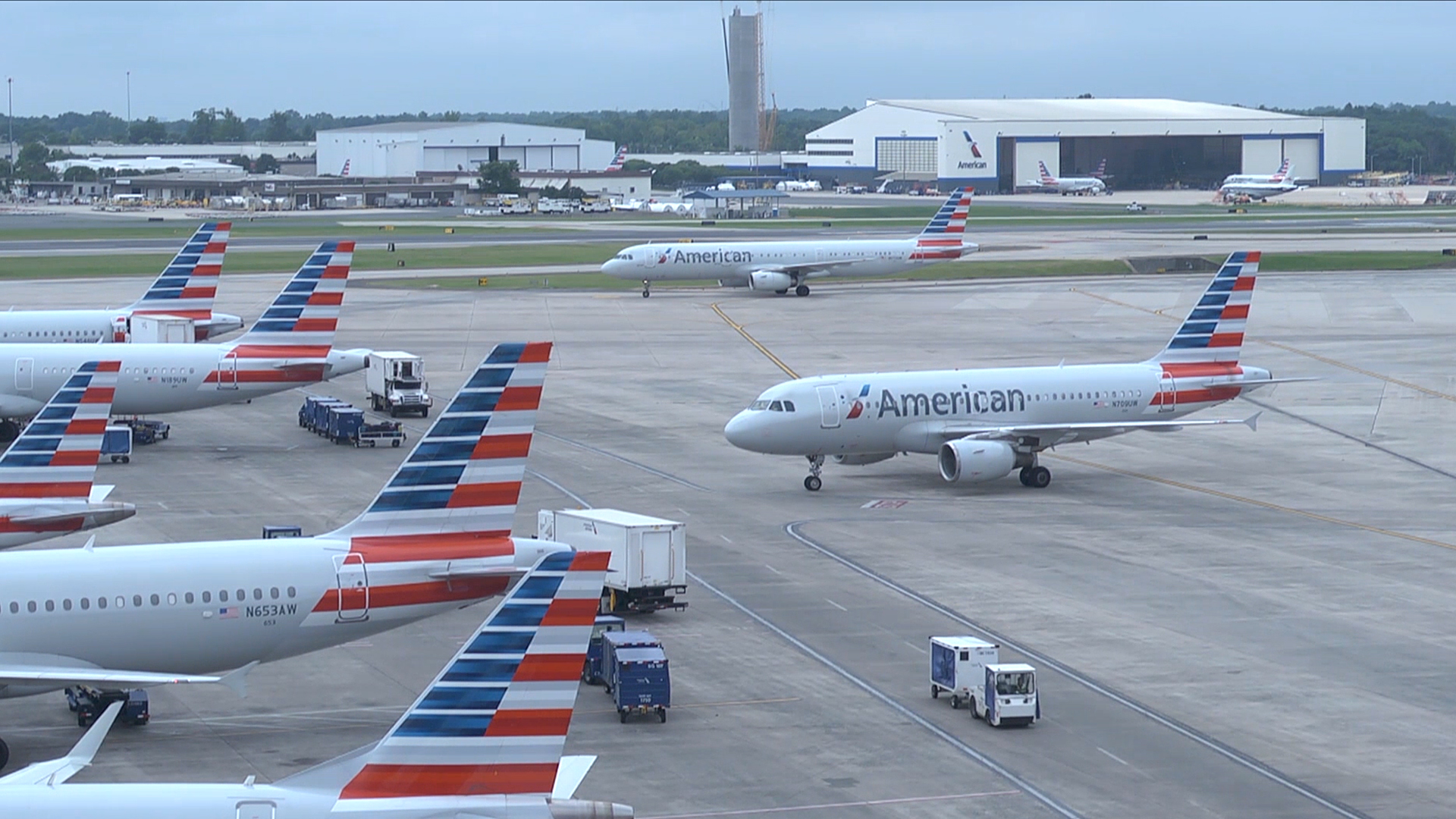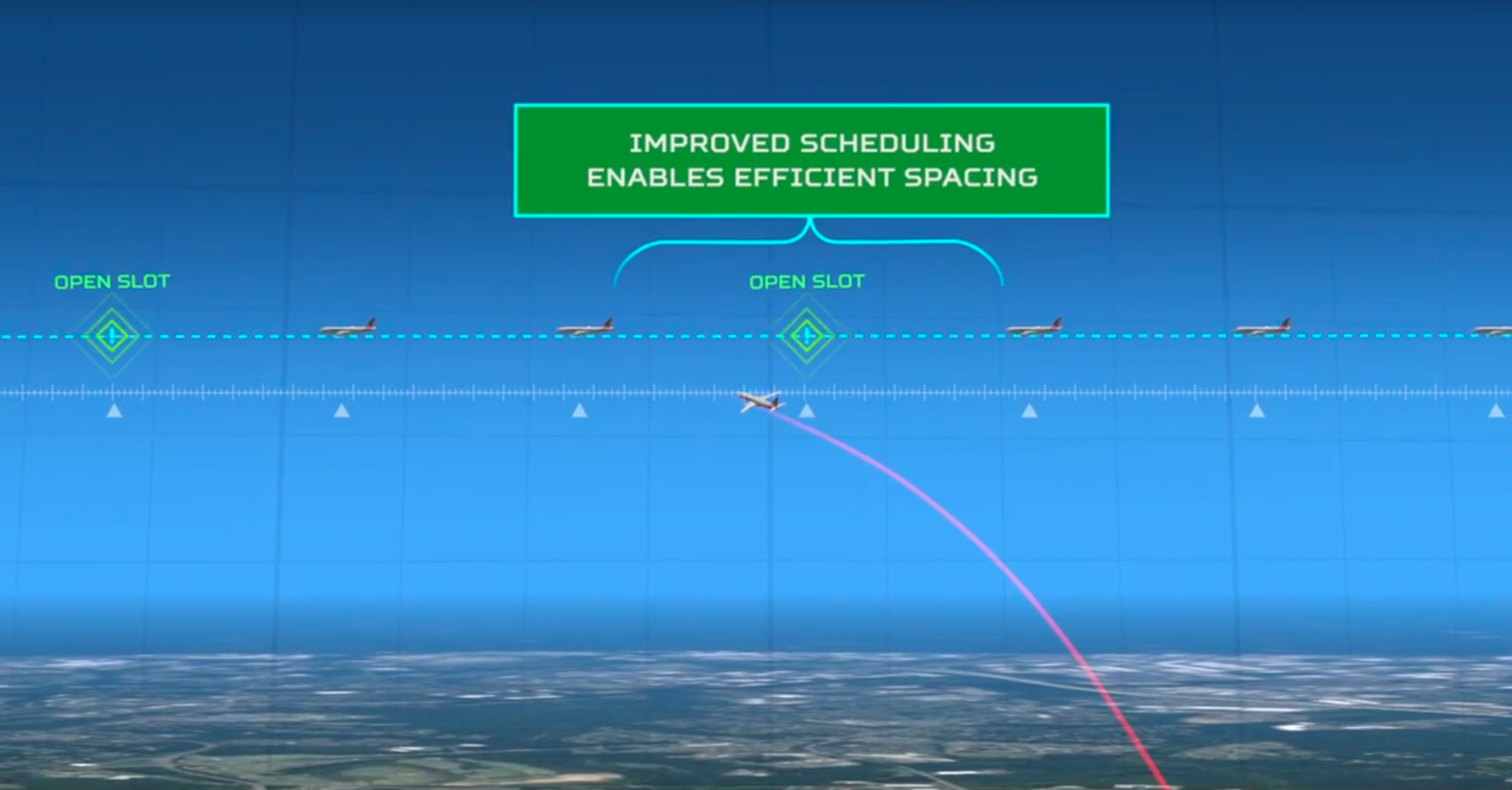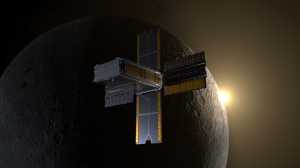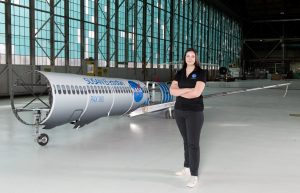NASA technology helps air travelers get smoothly from gate to sky.
After more than a year of pandemic-related travel restrictions, many people excitedly boarded planes to take them on long-awaited vacations. Plenty then sighed and settled in for a long wait: their takeoff was delayed, and they’d be sitting on the tarmac a while. Commercial air travel relies on intricate operations at the airport, and, with so many variables in play, inefficiencies can easily crop up.
That’s something NASA’s Airspace Technology Demonstration 2, or ATD-2, project aimed to change. One of a trio of projects tackling challenges faced in air traffic management, ATD-2 developed technologies that predict airport traffic conditions and determine the best time for departing flights to push back from the gate.
This both reduces delays and shifts wait time to the gate, instead of on the taxiway with engines running. The ultimate goal is to get travelers from gate to runway to the sky with minimal delay. And the benefits – for schedules, passengers, airlines, and the environment – are already adding up.
Optimizing the Flow of Flights
Most of us take for granted everything that goes into running a functional airport. But a great deal of information on arrivals, departures, surface traffic, delays, sudden changes in weather, and more must be tracked, communicated, and adjusted for by different groups of people.
The current system handles all this using a simple physical queue: when a plane is ready for departure, it gets in line and waits to use the runway. But, when unexpected problems arise, this queue can quickly back up, affecting both departures and arrivals. To protect against those consequences, air traffic managers may add more buffer time to flight schedules – an additional inefficiency.
By making the movements of aircraft from surface to sky more predictable, NASA researchers aimed to help reduce that buffer, and optimize the flow of flights through airports. The ATD-2 tools help get planes queued up in the best way to take their designated spot in the air traffic overhead.
More Communication, More Efficient Flights
At the heart of ATD-2’s approach is integrating numerous inputs of data from the Federal Aviation Administration and airlines and transforming that data so it’s easily shared across the various systems at work. The system is at work during parts of a flight controlled by the FAA and those where the airlines are in charge, on the ground.
A key realization underlying ATD-2 is that traffic congestion on the airport surface can’t be solved in isolation. You also have to account for the traffic operating in the surrounding airspace. Instead of having separate systems for arrivals, departures, and surface traffic, ATD-2 created one system to manage all these phases of flight. The software is called Integrated Arrival/Departure/Surface Traffic Management, or IADS.
Rather than having planes line up in a physical queue as soon as they’re ready to leave, the IADS scheduler creates a virtual queue, like a restaurant reservation system. That way, wait time can be spent at the gate with the engines off and the door open rather than on the ramp or taxiway burning fuel. The result is a more efficient and environmentally friendly operation.
By integrating data from previously independent systems, the ATD-2 IADS system provides operators in different facilities with a shared understanding of the airport traffic situation. ATD-2’s tools also include apps that users consult to know which aircraft should be in position, and when, for the whole process to work most efficiently. Everyone involved can see the different factors in play and the common goal to work towards.
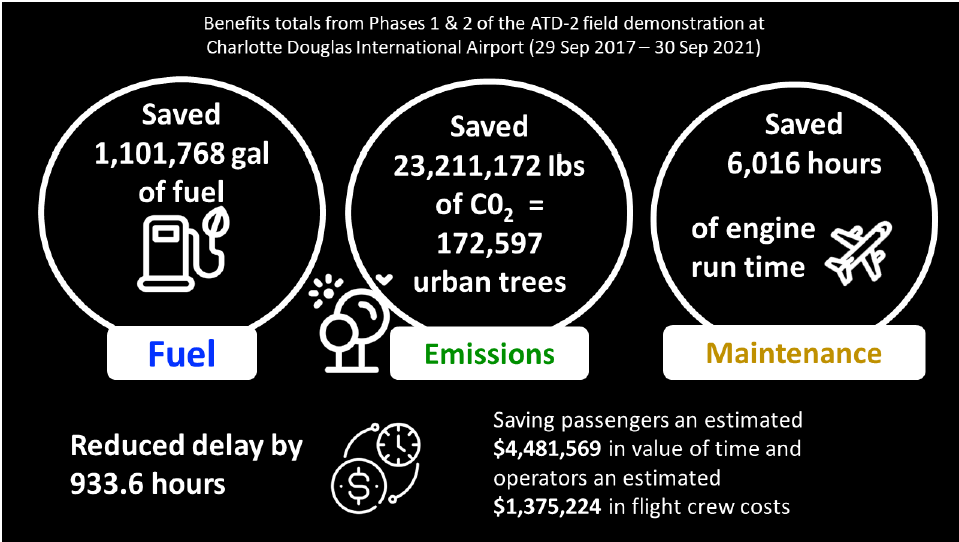
One Million Gallons Saved
The ATD-2 team first put their air traffic scheduling technology to the test with real-world users in September 2017 at Charlotte-Douglas International Airport in North Carolina. With partners from the FAA, commercial airlines, and the air traffic controllers’ union, they were able to show how improvements from ATD-2’s approach can drastically cut down delays and reduce emissions.
By September 2021, the IADS tools had saved more than one million gallons of jet fuel. The amount of carbon dioxide emissions avoided was equivalent to planting more than 172,000 trees in an urban environment. Those savings were made possible by reducing jet engine run time, which also decreases maintenance costs. Overall, passengers were spared 933 hours in flight delays and saved an estimated almost $4.5 million in value of time. Airlines also saved an estimated nearly $1.4 million in flight crew costs.
And that’s only at one airport. The benefits will be sky high when the ATD-2 tools are one day put into action at airports around the nation. With the end of the project in September 2021, NASA passed its research results and technology developed to the FAA and industry partners. The FAA’s Terminal Flight Data Manager program, or TFDM, will roll out IADS capabilities – made possible by NASA’s pathfinding work – to 27 major airports in the coming years.
Milestones:
ATD-2 included two separate field demonstrations of the Integrated Arrival Departure Surface, or IADS, system:
- A single-airport demonstration at Charlotte Douglas International Airport in North Carolina (Sep. 2017-Sep. 2020)
NASA developed core components of the IADS system and used them to validate concepts developed by the FAA and industry. In addition to the technology that was transferred by NASA, lessons were learned from the demonstration that reduced risk for the FAA’s implementation of the ATD-2 capabilities and established the business case for required industry investments. Although NASA’s single-airport research ended in September 2020, the FAA continues to support ATD-2 operational use at Charlotte to facilitate transition to TFDM.
- A multi-airport demonstration at Dallas/Ft. Worth International and nearby Dallas Love Field airports in Texas (April-Sep. 2021)
The team extended the single-airport tools to improve the efficiency of surface operations at neighboring airports, where departing flights compete for limited airspace resources. Using IADS’ surface traffic predictions, NASA’s terminal scheduler tool assessed demand to use the airspace versus its capacity and provided recommendations for efficient rerouting of flights.
Partners:
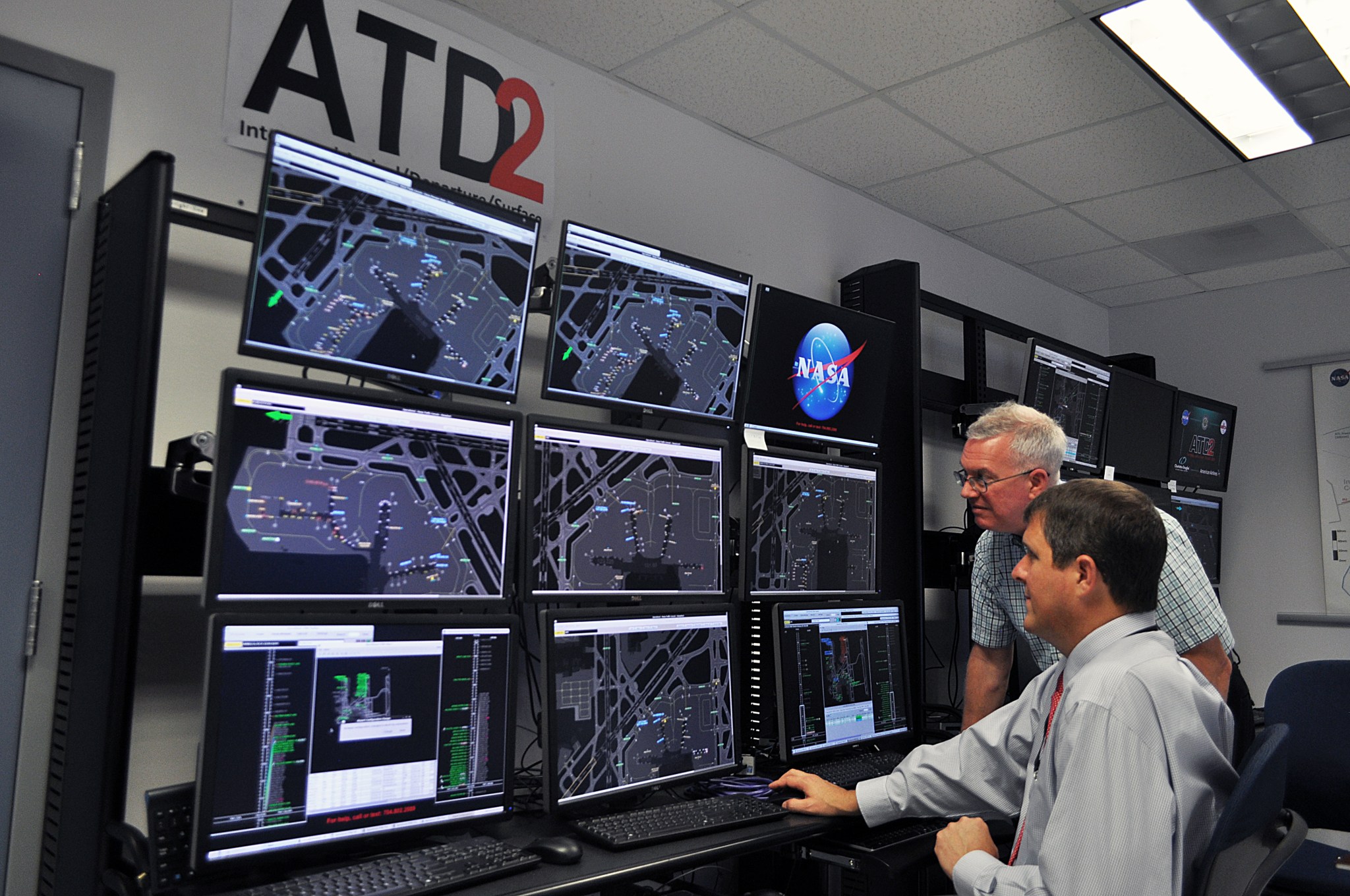
The Airspace Technology Demonstration 2 was run out of the Aviation Systems Division at NASA’s Ames Research Center in California’s Silicon Valley, in collaboration with the Federal Aviation Administration. The project was managed by NASA’s Airspace Operations and Safety Program. American Airlines, Southwest Airlines, the National Air Traffic Controllers Association, Charlotte Douglas International Airport, Dallas/Ft. Worth International Airport and Dallas Love Field Airport all partnered with NASA in the field demonstrations.
Learn more:
- NASA Testing Saves Airlines One Million Gallons of Jet Fuel (NASA story, May 2021)
- NASA Showcases Benefits of Air Traffic Management Tools (NASA story, Oct. 2019)
- NASA Field Demo to Reduce Ground Delays Begins (NASA video, Nov. 2017)
- NASA Air Traffic Management Demonstration Goes Live in Charlotte (NASA story, Nov. 2017)
For researchers:
- ATD-2 Technology Description (PDF, Sep. 2019)
- Airspace Technology Demonstration 2 (ATD-2) main page
- NASA fact sheet: Airspace Technology Demonstration 2
- NASA Ames Aviation Systems Division main page
- NASA’s Airspace Technology Demonstrations main page
- NASA’s Airspace Operations and Safety Program
For news media:
Members of the news media interested in covering this topic should reach out to the NASA Ames newsroom.
Banner image:
Starting in 2017, NASA’s Airspace Technology Demonstration 2, or ATD-2, tools to more efficiently manage departing air traffic were tested at the Charlotte Douglas International Airport in North Carolina, shown here. This image comes from a 2017 NASA video about the ATD-2 project.
Credits: NASA



























